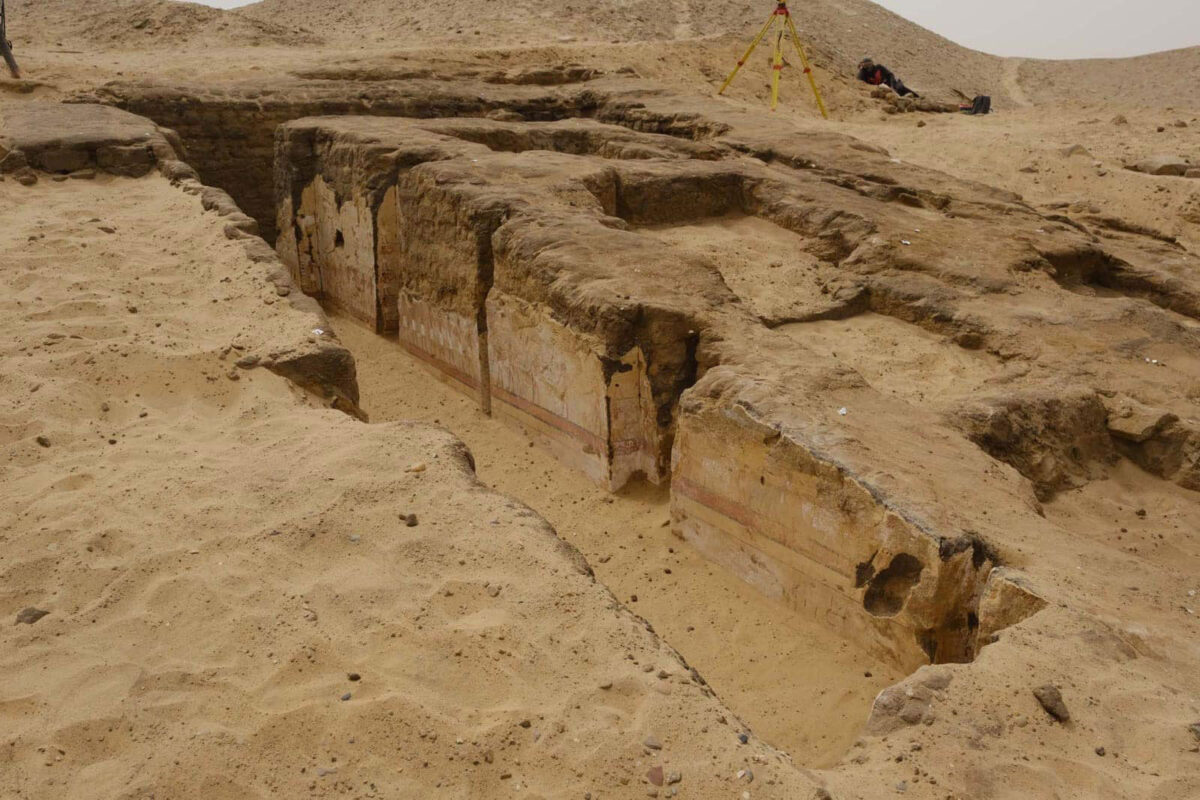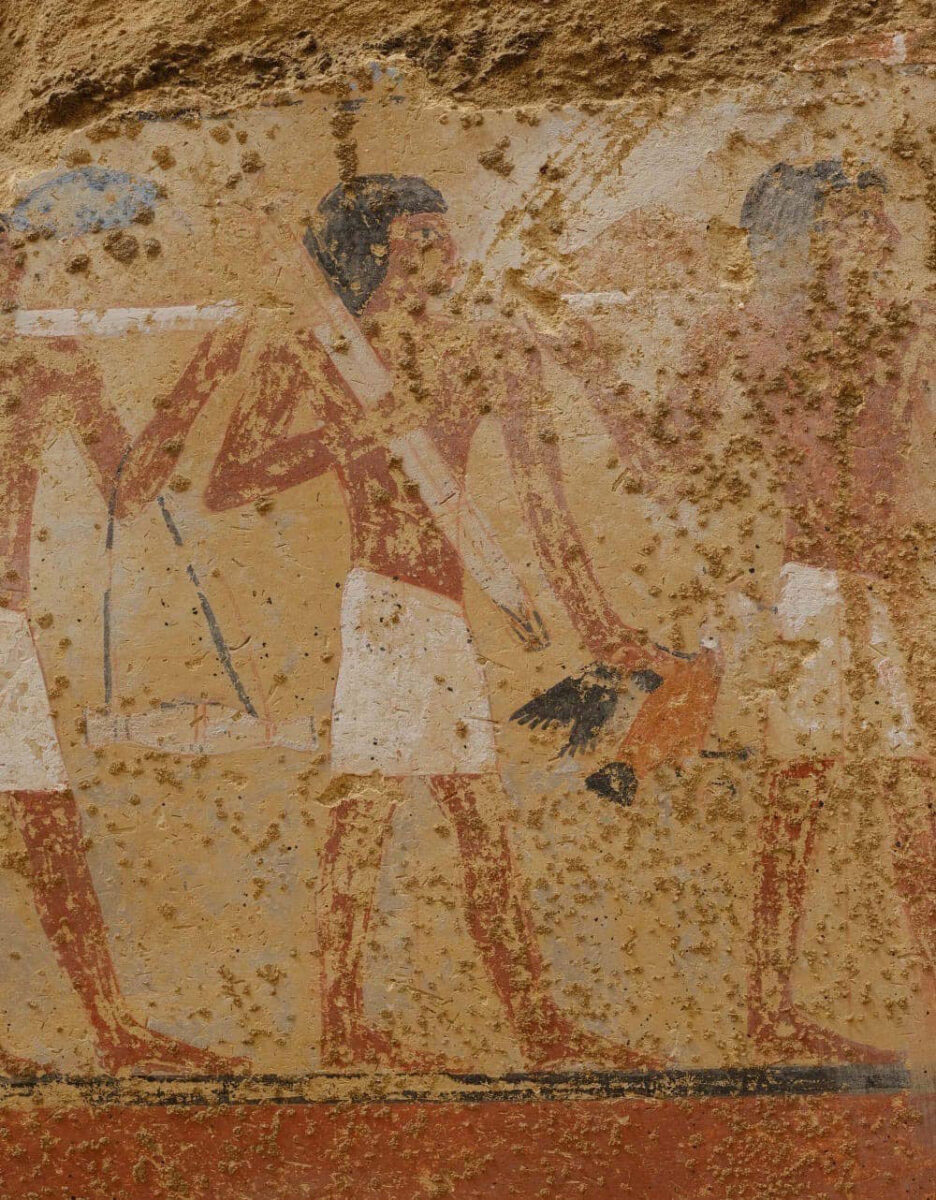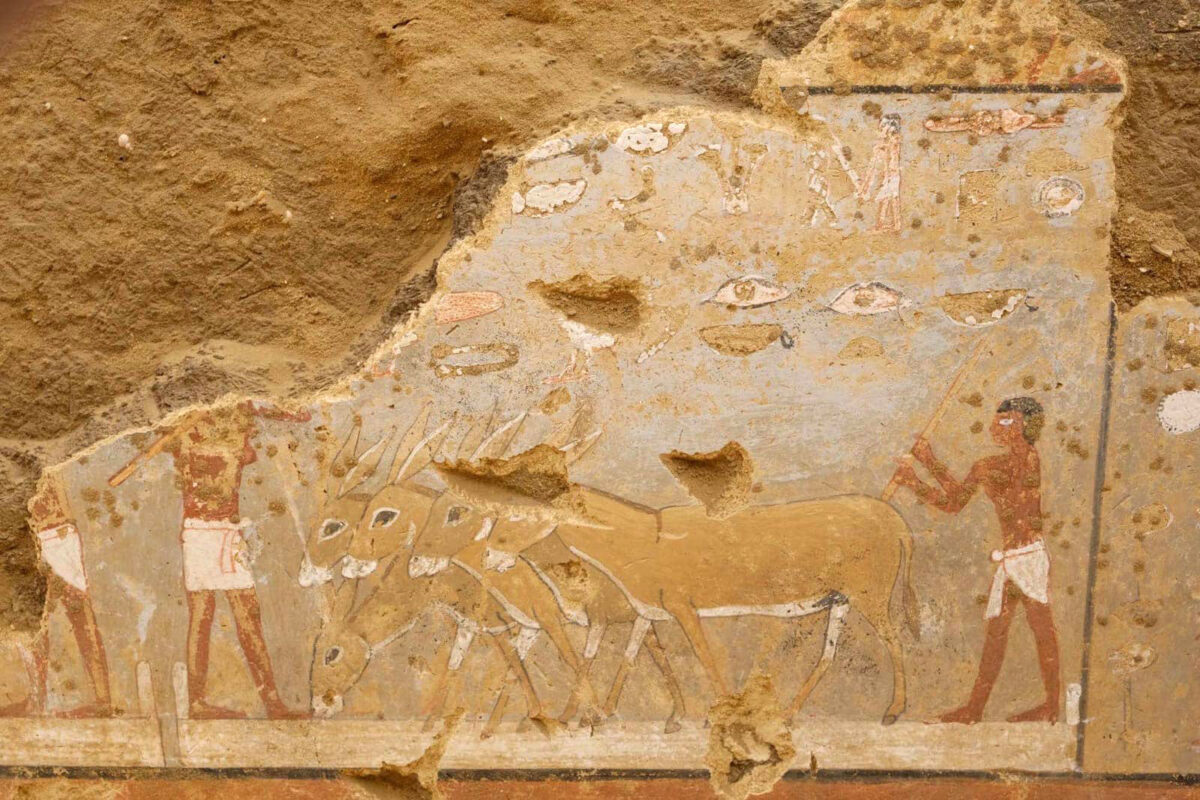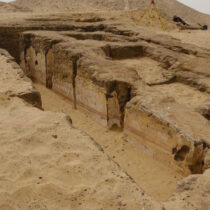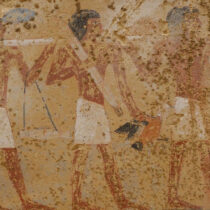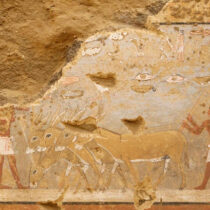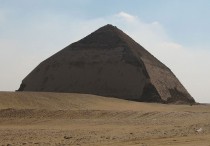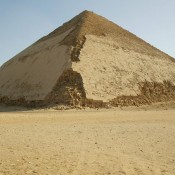A mastaba tomb decorated with rare iconographical themes has been uncovered in Egypt’s Dahshur.
The Egyptian-German archaeological mission affiliated with the German Archaeological Institute, headed by Dr. Stefan Seidelmayer, uncovered the mastaba tomb dating back to the Old Kingdom, during its work in the Dahshur archaeological area.
Dr. Hisham Al-Laithi, Acting Secretary-General of the Supreme Council of Antiquities and Head of the Antiquities Preservation and Registration Sector at the Supreme Council of Antiquities, explained that the mastaba is part of the large Old Kingdom cemetery of the inhabitants of Dahshur. The cemetery was uncovered in 2002 in cooperation with the Free University in Berlin.
Dr. Al-Laithi added that the importance of the mastaba is also due to its wonderful inscriptions and iconography. The themes depicted on its walls include daily life activities such as cultivating grains, sailing on the Nile River, and trading in the market, as well as scenes of sacrifices which are rare at the Dahshur mastabas.
For his part, Dr. Stefan Seidelmeyer, former director of the German Archaeological Institute and head of the mission, pointed out that the mastaba was built of mud brick and belonged to a person called Seneb-neb-ef and his wife Edut, pointing out that it dates back to the end of the Fifth Dynasty and the beginning of the Sixth Dynasty (about 2300 BC). Through the inscriptions of the tomb, it was revealed that its owner held several positions in the royal palace, while his wife was a Priestess of Hathor, Lady of the Sycamore.
Dr. Seidelmeyer stressed that the mission will complete its excavations at the site, adding that cleaning and documentation of the cemetery and its inscriptions will take place during the coming period.
He pointed out the work carried out by the mission at the site, as it began its work in 1976, during which its excavations initially focused on the site’s pyramids commissioned by King Sneferu (Bent Pyramid and Red Pyramid, Old Kingdom, 4th Dynasty), and King Amenemhat III (’Black Pyramid, Middle Kingdom, 12th Dynasty). However, the mission’s excavations have recently focused on the tombs of prominent individuals such as officials, priests, and administrators who lived during that period. It is worth noting that the site also hosts what remains of King Amenemhat II’ s White Pyramid and its associated complex (Middle Kingdom, 12th Dynasty).
Among the most important things that the mission uncovered was the tomb of palace servants from the era of Amenemhat II (Middle Kingdom, about 1880 BC), a harbor serving Sneferu’s Bent Pyramid and a causeway joining the two, and a ritual garden attached to the pyramid’s Valley Temple.
